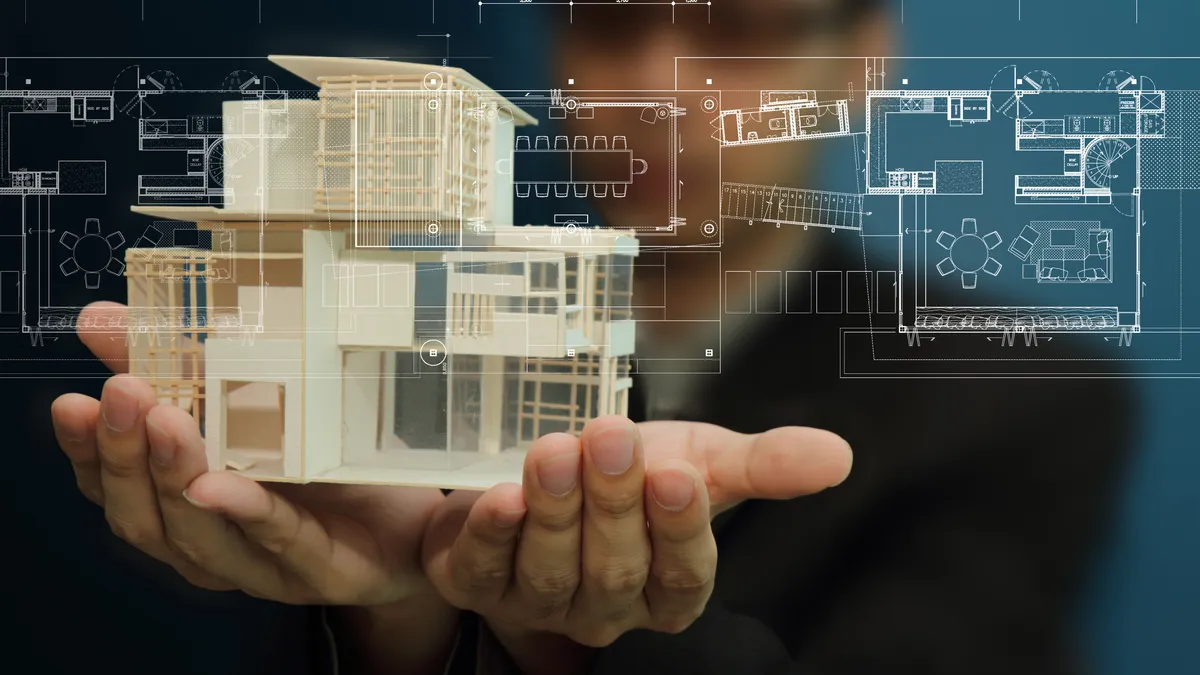Dive Brief:
-
Billings at U.S. architecture firms fell in August, according to a monthly report from the American Institute of Architects released Wednesday. August’s score of 49.7 represents a decline in nonresidential design services, with marks below 50 indicating a contraction in the market.
-
The AIA isn’t concerned, however. New projects inquiries scored 61.8 on the index in August, an increase from 57.5 in July, and design contracts came in at 52.7 in August, up from 51.8 in July — indicating a forthcoming need for design services, which result in billings and lead to construction spending.
-
Among the U.S. regions tracked by the index, the Northeast and Midwest continued their months-long slide, both remaining below 50 in August, while the Midwest and South stayed above the break-even point for the month.
Dive Insight:
The ABI is a leading indicator of future nonresidential construction activity, reflecting the nine- to 12-month lead time between when design services are rendered and construction costs are incurred.
August’s contraction to a sub-50 score is only the second this year for the ABI, but the strong figures for new design contracts and project inquiries during the month bode well for an increase in billings later this year and in early 2017. Much of the uncertainty around new construction is tied to the upcoming U.S. presidential election. Last month, the AIA credited a slowdown in design services — with the ABI dipping from a score of 52.6 in June to 51.5 in July — to clients and project teams tabling financial decisions on some large projects until the country’s near-term political future is clearer.
The ABI has held roughly between 50 and 53 for the first half of 2016. That relatively stagnant trend has also been reflected in construction spending. Earlier this month, the U.S. Department of Commerce reported that construction spending was unchanged from June to July of 2016 at a seasonally adjusted annual rate of $1.153 trillion. As with the ABI showing that spending for most of the first half of 2016 was in positive territory, the Commerce Department reported construction spending was up 1.5% from July 2015 and up 5.6% for the first half of 2016 compared to the year-earlier period.
In the meantime, architects and builders are facing constraints including a skilled-labor shortage and new regulations that they worry could raise construction costs. Earlier this month, the Associated General Contractors of America reported that seven in 10 of its member firms struggled to find hourly craft workers and nearly half had to increase hourly pay for that group while the same number found it necessary to increase overtime hours.
On the regulations front, the Occupational Safety and Health Administration in July announced an interim rule raising current maximum civil penalties by 78% for workplace safety violations. The rule will undoubtedly impact construction, which accounted for two in 10 private industry workplace fatalities in 2014, the BLS reported. Additionally, the Department of Labor’s new Fair Pay and Safe Workplaces Executive Order — dubbed the "blacklisting" rule — could prevent companies with labor-law violations from bidding on government jobs. While industry groups acknowledge the need to promote safety on job sites, they assert that rules such as OSHA’s and the DOL’s burden project teams with the high costs of compliance.
For all the latest construction industry data, check out our Industry Pulse page here.














